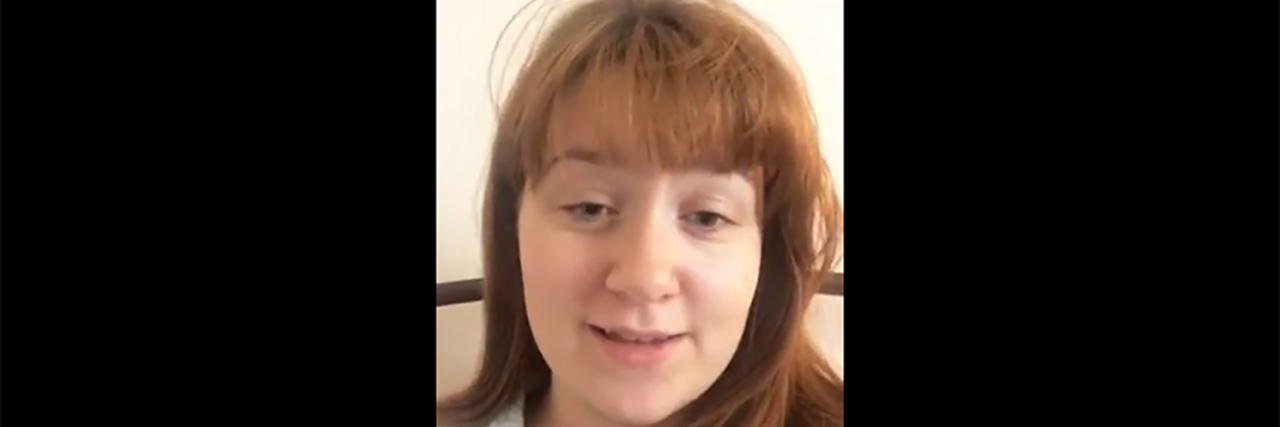When I was younger, I wouldn’t be seen anywhere without my mascara. I vividly recall walking bare-faced into college one day, having caught the train in a rush and leaving my trusty mascara wand at home. Immediately upon seeing me, my friend’s boyfriend exclaimed, “Gosh, you don’t look well.” Granted, he wasn’t the subtlest sandwich at the picnic (how many mixed metaphors does it take to change a lightbulb?). Nevertheless, he had unwittingly embodied the response I had been dreading, enough to make me get up early every day to put on makeup on my weary face.
So it might surprise you (and 17-year-old me) that last week, I made bare-faced, honest vlogs about my experience of chronic pain. I say “vlogs,” but really they were chatty, real-time Instagram Stories, hence the portrait orientation. If I do vlogs like this again, I think I may use my proper camera so everyone can enjoy the full width of my face. Anyway, you can watch the vlogs for yourself here:
I will point out that I was planning to film Saturday and Sunday as well, but, as anyone who is good enough to watch to the end will see, things took a bit of an unexpected turn… (Spoiler alert: I was in a car crash. I swerved to avoid a pheasant. Double spoiler alert: I’m completely fine.) Alas, the week-long vlog challenge was cruelly knocked over by Fate.
What I learned from my Invisible Disabilities Awareness Week Challenge…
– Filming my day helped me feel visible. Usually, I would go through the moment-to-moment decision-making, or the ordeal of not being able to move very much, or having a complete pain-related emotional meltdown on my own. Actively deciding to share this, warts and all, felt like an important move in my advocacy journey. When pain is invisible, it is easy for it to be underestimated or ignored altogether. Whilst this has occasional social benefits, it can also engender a kind of cognitive dissonance which can be very distressing for the person in pain. I was really relieved to outsource that this week by sharing my experiences and feelings.
– Explaining the mechanisms I have developed for tracking and dealing with my pain made me feel a bit proud. Not proud of the pain, obviously, but proud of how far I’ve come on my pain-conquering journey. Has it made a huge difference to the physical experience of pain? Heck no. Has it made it easier to bear and had an all-round positive effect on my mental health? You betcha.
– People are nosy. Seriously, I think everyone I have ever had an interaction with in my life saw at least one bit of my Story. But I don’t mind that at all; after all, that’s what it was there for! And I’m always touched, and a bit chuffed on behalf of the other person, when someone makes the effort to take interest in my challenging internal reality. Someone offering to share that, even just for a moment, is precious. And if they can flick off when they like, how much nicer for them; to be honest, I’d do the same thing too in their shoes.
– People are nice. Over the course of the week I received a handful of really lovely messages; a couple from people I knew at school, a couple of fellow women with vulvodynia and fellow “spoonies.” I even ended up having a couple of really uplifting conversations with people whose care and genuine interest I was very surprised about, having not had many conversations with them in the past. It shows a lot about a person’s character when they see suffering and are willing to respond to it with uplifting words, or even more costly to them, an open-ended question. To everyone who made that effort: thank you again. And to those who didn’t reach out but did still watch: thank you, too. I know it can be difficult to work out how to respond to a reality of this nature. More on that another day, I think!
– Pheasants are speedy little blighters. But I’m also grateful to that pheasant, because my brush with mortality helped me realize: despite my daily struggles with chronic pain, I am grateful to be alive. Now more than ever, I feel it is my responsibility to make my invisible disability visible — one day at a time.
We want to hear your story. Become a Mighty contributor here.

